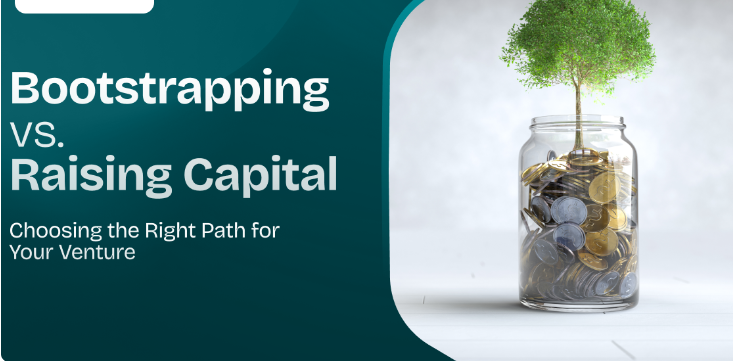Bootstrapping vs. Raising Capital: Which Is Right for Your Business?
Every entrepreneur faces a critical question at some point: Should I bootstrap my business or raise outside capital?
Both approaches can fuel growth, but they come with very different trade-offs. Choosing the right path depends on your business model, goals, and tolerance for risk.
Let’s break down the differences, pros, and cons so you can decide which strategy works best for your business.
What Is Bootstrapping?
Bootstrapping means funding your business with your own savings, reinvesting profits, and growing organically without outside investors. Many small businesses and startups begin this way.
Pros of Bootstrapping:
-
Full Control: You own 100% of the business and call the shots.
-
Lean & Disciplined Growth: Limited funds force smarter spending and innovation.
-
No Investor Pressure: You grow at your own pace without external expectations.
Cons of Bootstrapping:
-
Limited Resources: Growth may be slower without significant upfront capital.
-
Personal Risk: You may have to use personal savings or debt to fund operations.
-
Scaling Challenges: Expanding into new markets or scaling quickly can be difficult.
What Is Raising Capital?
Raising capital involves securing funds from outside investors (angel investors, venture capitalists, or crowdfunding) or through loans. This method injects cash into your business in exchange for equity or debt repayment.
Pros of Raising Capital:
-
Faster Growth: Large sums of money allow you to scale quickly.
-
Access to Expertise & Networks: Investors often provide mentorship and connections.
-
Shared Risk: You’re not relying solely on personal funds.
Cons of Raising Capital:
-
Loss of Control: Investors may want decision-making power or board seats.
-
Pressure for High Returns: Growth targets and exit strategies (like selling the company) may be pushed faster than you’d prefer.
-
Dilution of Ownership: You give up equity, reducing your share of future profits.
Key Factors to Consider
-
Stage of Your Business
-
Early-stage, low-cost ventures often thrive with bootstrapping.
-
Capital-intensive startups (like tech or manufacturing) may need outside funding.
-
-
Growth Goals
-
Want steady, controlled growth? Bootstrapping works.
-
Want rapid market domination? Raising capital might be necessary.
-
-
Industry Norms
-
Tech startups often raise VC money.
-
Service-based businesses can often bootstrap successfully.
-
-
Risk Tolerance
-
Are you comfortable risking personal savings?
-
Or would you rather share the risk with investors, even if it means giving up control?
-
Hybrid Approach: The Best of Both Worlds
Many entrepreneurs start by bootstrapping to prove their concept and then raise capital later to scale. This approach reduces risk for investors (since you’ve shown traction) and often leads to better funding terms.
Final Thoughts
There’s no one-size-fits-all answer to the bootstrapping vs. raising capital debate.
-
Choose bootstrapping if you value control, independence, and lean growth.
-
Choose raising capital if your business requires significant upfront investment or you want to scale quickly.
The most important thing is aligning your funding choice with your vision for the business—and your personal comfort level with risk and ownership.


